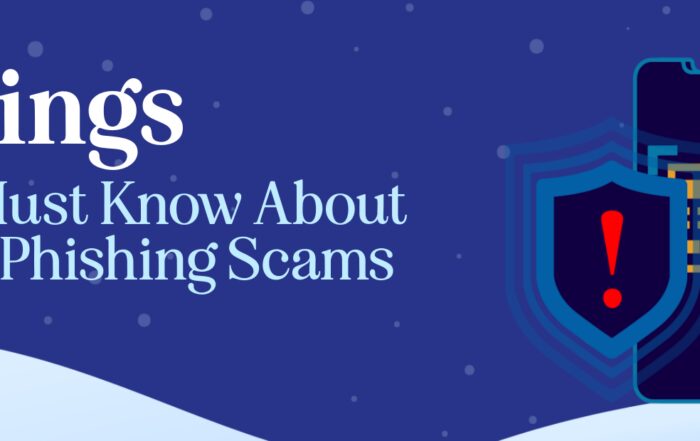Essential Tips: How to Manage and Prevent Malicious Browser Notifications on Your Business Computer
Learn how to effectively manage and prevent malicious browser notifications on your business computer. Discover essential tips for secure browsing, proper browser settings, and maintaining your system's security and efficiency. Keep your business safe from security breaches and data loss with expert advice.
How To Manage Malicious Browser Notifications On Your Business Computer: A Professional Guide
Dealing with malicious browser notifications on your business computer can be frustrating and harmful. Knowing how to manage and prevent these intrusive alerts is essential to maintaining your system’s security and efficiency. Malicious notifications can lead to security breaches, data loss, and compromised personal information, putting your business at significant risk.
Secure browsing habits and proper browser settings are your first line of defense. These malicious notifications often exploit browsers’ vulnerabilities or come from malicious extensions. By keeping your software up to date and using trustworthy security solutions, you can prevent most issues before they start.
If your system already shows suspicious notifications, you should immediately act. Scan your system for malware and adjust your browser’s notification settings to block unwanted alerts. Also, consider consulting IT professionals to ensure thorough diagnostics and maintain business continuity.
Key Takeaways
- Managing notifications is crucial for business security.
- Proper settings and updates help prevent malicious alerts.
- Immediate action and professional help are vital for recovery.
Understanding Malicious Browser Notifications
Malicious browser notifications can pose serious security risks to your business computer. Knowing what browser notifications are and how to identify harmful ones is essential.
Defining Browser Notifications
Browser notifications are alerts websites send to your computer, often asking for permission first. These alerts can be helpful, like reminders or updates from trusted sites.
Examples of everyday notifications:
- News updates
- Task reminders
- Email alerts
These notifications appear on your screen even if the website is not open. Your browser settings usually control these alerts.
Identifying Malicious Notifications
Malicious notifications look like standard alerts but lead to harmful actions when clicked. They often aim to redirect you to dangerous websites or download malware.
Warning signs of malicious notifications:
- Unexpected prompts: Notifications from websites you don’t recognize.
- Urgent language: Alerts claiming your computer is at risk and needs immediate action.
- Requests for permissions: Asking for permissions that are unusual for the site.
To protect your business computer, be cautious about which websites you allow to send notifications. Adjust your browser settings to block or limit alerts from unfamiliar sites. This proactive approach helps maintain your device’s security.


Familiar Sources of Malicious Notifications
Malicious notifications often come from specific sources that exploit vulnerabilities or trick users into giving permissions. Recognizing these sources can help you protect your business computer from potential threats.
Compromised Websites
Compromised websites are a frequent source of malicious notifications. These websites may have vulnerabilities that hackers exploit to inject harmful code. You might see pop-up notifications asking for permissions when you visit these sites.
Granting these permissions can lead to endless spam and potentially harmful notifications. To avoid this, ensure your browser and its security settings are always up to date. Using a reliable security tool can also help block these notifications.
Adware and Malvertising
Adware and malvertising are other familiar sources. Adware is software designed to display ads on your computer. Sometimes, these ads come in the form of notifications. Malvertising is even more dangerous. It involves injecting malicious ads into legitimate advertising networks.
These ads can redirect you to harmful websites or prompt you to install malware. Avoid clicking on suspicious ads, use an ad blocker, and keep your security software active to combat this.
Social Engineering Tactics
Social engineering tactics trick you into taking actions that compromise your security. These tactics include phishing emails, fake alerts, or scam notifications claiming your device is at risk.
The goal is to make you panic and click on the notification, which can lead to malware installation or data theft. Always verify the source of such notifications before taking any action. Training employees to recognize these tactics can further protect your business. Ensure your team knows to report any suspicious activity immediately.
Preventative Measures
To manage malicious browser notifications on your business computer, consider updating browser settings, installing antivirus software, using web filtering solutions, and educating employees on security practices.
Updating Browser Security Settings
First, ensure your browser’s security settings are up to date. By doing so, you can block pop-ups and prevent malicious notifications.
Enable features like “Do Not Track” requests and adjust content settings to limit site permissions. Clear your browser’s cache and cookies regularly to remove harmful data. Ensure automatic updates are turned on so you receive the latest security patches promptly.
Browsers often have built-in tools to block or filter content. Utilize these features to reduce potential threats. Regularly review these settings to adapt to evolving security needs.
Installing Antivirus Software
Install reputable antivirus software to help manage browser security. An antivirus program can detect and remove malicious software before it harms your system.
Schedule regular scans to ensure your computer remains free of threats. Many programs provide real-time monitoring and can warn you about suspicious activity. Ensure your antivirus software is set to update automatically; this keeps its virus definitions current, protecting you from the latest threats.
Consider antivirus solutions that include browser protection features such as blocking malicious websites and stopping harmful downloads.
Implementing Web Filtering Solutions
Web filtering solutions can block access to harmful websites and prevent malicious notifications.
These tools can be configured to restrict access based on URL categories, keywords, or specific domains. This helps maintain productivity while ensuring security.
Implement a centralized web filtering solution to enforce policies across all devices in your business. This can be done through your network firewall or specialized software. Regularly review and update filtering rules to keep up with new threats.
Educating Employees on Security Best Practices
Employee education is critical for preventing malware and browser attacks. Regular training sessions should focus on identifying and avoiding malicious notifications.
Teach employees to recognize phishing attempts, suspicious pop-ups, and other threats. Please provide them with guidelines on email safety, such as not clicking unknown links or downloading attachments from untrusted sources.
Encourage a culture of security awareness to ensure everyone plays a role in protecting sensitive information. Clear communication on the proper steps when encountering suspicious activity will help maintain a secure environment.
Immediate Response Actions
Taking immediate steps to manage malicious browser notifications on your business computer is essential. You can protect your system from potential threats by disabling notifications from untrusted sources, running malware scans, and clearing the browser cache and cookies.
Disabling Notifications from Untrusted Sources
To prevent malicious notifications, start by turning off notifications from untrusted websites.
- Open your browser settings: Access the menu and select settings.
- Navigate to notification settings: Look for the section to manage notifications.
- Block untrusted sites: Disable or remove notification permissions for sites you do not recognize or trust.
This will stop unwanted pop-ups that could carry harmful links or malware.
Running Malware Scans
After turning off suspicious notifications, run a malware scan using your security software.
- Choose a reputable tool: Use trusted antivirus programs like Trend Micro or Norton.
- Perform a full scan: Select a comprehensive scan to detect hidden threats.
- Follow the prompts: If malware is found, follow the software’s instructions to remove it.
Regular scans can identify and eliminate threats before they cause damage.
Clearing Browser Cache and Cookies
Clearing your browser’s cache and cookies can help remove any stored malware or harmful scripts.
- Open the browser settings: Go to the privacy or history settings section.
- Clear browsing data: Select the option to clear cache and cookies.
- Choose the time range: Opt for “all time” to clean your browser thoroughly.
This step ensures your browser starts fresh, free from potentially malicious data.
Following these immediate actions minimizes the risk of harmful notifications affecting your business computer.
Diagnostics and System Health Checks
Regular diagnostics and system health checks are essential for maintaining your computer’s performance and security, especially in a business environment. This involves reviewing system logs and analyzing browser extensions to identify potential issues and malicious activities.
Reviewing System Logs
System logs contain records of various events that occur on your computer. Reviewing these logs allows you to spot unusual behavior or repeated errors that might indicate malware or other problems.
To access system logs on Windows 11:
- Open the Event Viewer by typing eventvwr in the Start menu search.
- Navigate to Windows Logs and review the Application, Security, and System categories.
Focus on any unusual or repetitive warnings and errors. Look out for unknown processes or services that start and stop frequently, as these can be signs of malware.
Consider using tools like PC Health Check or other system diagnostic software to compile and interpret log data more comprehensively for more detailed analysis.
Analyzing Browser Extensions
Browser extensions can enhance productivity and pose security risks if they contain malware or vulnerabilities. To ensure their safety, regularly analyze the extensions installed on your browsers.
To review and manage extensions in Google Chrome:
- Click the three-dot menu in the top-right corner and select Extensions under More Tools.
- Disable or remove any extensions you do not recognize or no longer need.
Conduct a Safety Check in Google Chrome by going to Settings and clicking on Check Now under the Safety Check section. This feature will scan for harmful extensions, out-of-date software, and compromised passwords.
Keeping your browser clean from untrusted extensions helps protect your business computer from malicious notifications and attacks.
Recovery and Post-Incident Analysis
When managing malicious browser notifications on your business computer, it’s crucial to focus on restoring systems, enhancing your security measures, and recording every detail of the incident and the actions taken.
Restoring Affected Systems
After identifying malicious notifications, restoring any affected systems should be immediately prioritized. Begin by isolating the infected devices from the network to prevent further spread. Use trusted antimalware tools to scan and remove any detected threats.
Next, verify that all system software and applications are up to date. This includes installing the latest security patches and updates from vendors. If the system’s integrity is compromised, consider restoring from the most recent, clean backup.
Strengthening Security Posture
Once the systems are restored, review and enhance your security measures to prevent future incidents. Start configuring your browsers to block malicious notifications and ensure only trusted domains can send messages. Then, implement stricter security policies and regular software updates.
Employ more advanced security solutions like endpoint protection and network monitoring tools. Educate employees on recognizing suspicious activities and enhance their cybersecurity awareness through training programs. Regular audits and assessments should be conducted to ensure compliance with your security policies.
Documenting the Incident and Response
Keep thorough records of the incident and the actions taken during the response. This documentation should include details such as the date and time of the incident, specific systems affected, the type of malicious notifications, and the tools used for remediation.
Documenting the response process is equally important. Record the steps taken to isolate and clean the affected systems, updates applied, and any changes to security policies. This information is vital for legal reasons, future reference, and improving incident response plans.
A comprehensive post-incident report will help you analyze your response’s effectiveness and identify areas for improvement. It also serves as a resource for training and educating your team on handling future incidents effectively.
Maintaining Business Continuity
Effective management of malicious browser notifications is crucial for business continuity. Essential practices include developing a thorough response plan, ensuring regular backups and updates, and maintaining continuous monitoring and reporting systems.
Developing a Response Plan
Creating a response plan enables your business to react promptly to security breaches. Begin by identifying potential threats and creating a step-by-step protocol for addressing them. This plan should detail who is responsible for each task and include communication strategies for internal and external stakeholders. Ensure your staff is trained on their roles and responsibilities within this plan.
Regularly review and update the plan to reflect any changes in your business processes or new types of threats. Testing the plan through simulated attacks can help identify weaknesses and improve your response capabilities. Ensure all critical business functions are covered, and your plan is accessible to everyone involved.
Regular Backups and Updates
Frequent backups ensure that your data isn’t lost in case of an attack. Schedule regular backups for all critical files and store them in a secure location. Implement both on-site and off-site backup solutions to maximize data safety.
Equally important are regular software updates. Keeping your operating systems, browsers, and security software up to date helps protect against vulnerabilities that hackers could exploit. Set up automatic updates where possible to reduce the risk of missing crucial patches. Use antivirus and antimalware tools to scan your systems for infections regularly.
Backup and recovery tests are essential to verify the integrity of your backup systems. This ensures that in the event of data loss, your business can quickly resume normal operations with minimal impact.
Continuous Monitoring and Reporting
Continuous monitoring helps detect malicious activity as soon as it occurs. Use tools that can track and analyze web traffic for suspicious behavior. Set up alerts to notify IT staff immediately when potential threats are detected.
In addition to automated monitoring, regular manual reviews of system logs and employee activities should be conducted. Encourage employees to report unusual browser behavior, such as unexpected pop-ups or redirects.
Report all detected threats and incidents to a centralized system. This will help track patterns and improve your incident response over time. Consistent monitoring and reporting ensure that your business remains vigilant and can quickly address any signs of malicious activity before it escalates.
Why CCS IT Pros Are The Best Choice For Your Colorado Springs Organizations
Choosing the right IT service provider is crucial for the success of your business. CCS IT Pros offer a fully managed IT service that takes the stress out of managing technology. You can then focus on what truly matters: running your business, teaching, or seeing patients.
Customized IT Support
Every business is unique, and CCS IT Pros provides a customized IT support solution tailored specifically to your needs. Your company will have an IT strategy to improve productivity and efficiency.
Expertise with Both Windows and Apple
Whether your organization uses Windows or Apple systems, CCS IT Pros have the knowledge and experience to support both. This ensures a seamless experience regardless of the technology you use.
Proven Experience Across Colorado
With over two decades of experience, CCS IT Pros have a strong presence in Colorado Springs and the surrounding areas. They provide IT services to businesses in Colorado Springs, El Paso County, Florence, Pueblo, and other regions throughout Colorado.
Veteran-Owned Business
CCS IT Pros is a Service-Disabled Veteran-Owned Small Business that allows you to support veteran entrepreneurs while receiving top-notch IT services. This background brings a unique perspective and commitment to service excellence.
Focus on Your Goals
Their IT solutions leverage the right technology to meet your business goals, improve efficiency, increase productivity, or manage complex IT infrastructure.
By choosing CCS IT Pros, you ensure your business has a reliable and expert partner for all its IT needs.
Latest Blog Posts
How to Create a Business Continuity Plan That Works
Introduction Every business faces unexpected disruptions — from power outages and cyberattacks to natural disasters. [...]
5 Ways to Enhance SMB Business with an MSP
Introduction Small and medium-sized businesses face more technology pressure than ever. Cybersecurity risks, cloud adoption, [...]
How to Secure Your Business Before the Holiday Season
The holiday business security guide is essential for every small and medium-sized business preparing for [...]
5 Things SMBs Must Know About Holiday Phishing Scams
The holiday phishing scams tips every small and medium-sized business needs are simple but powerful. [...]
5 Things Manufacturers Need To Know Before Hiring A Local IT Company
5 Things Manufacturers Need To Know Before Hiring A Local IT Company Are you looking [...]
IT Help Desk For Law Offices (Service Overview)
Stop Thinking About IT And Start Focusing On Your Caseload With so much to prioritize [...]











